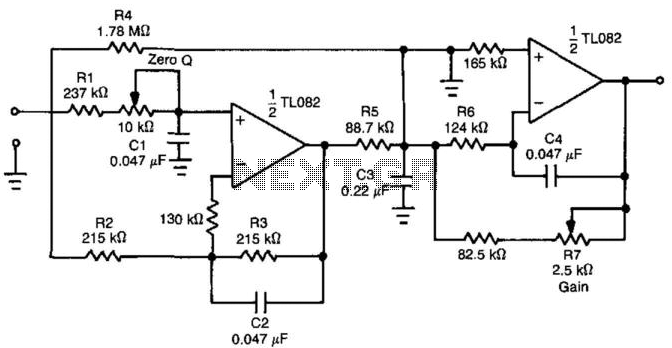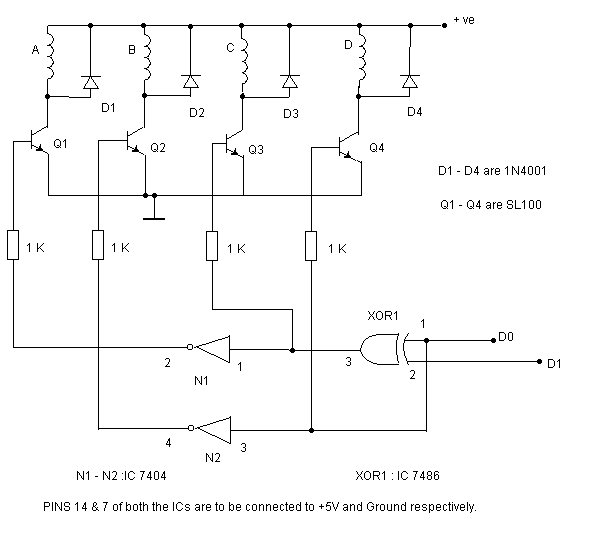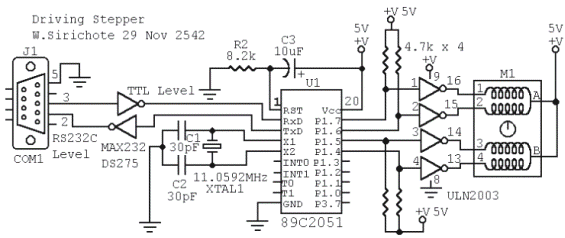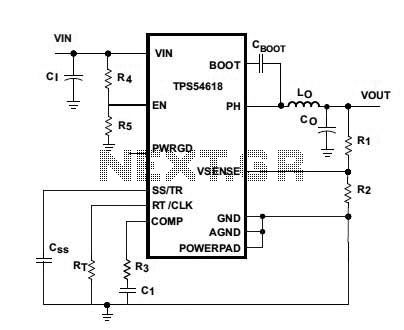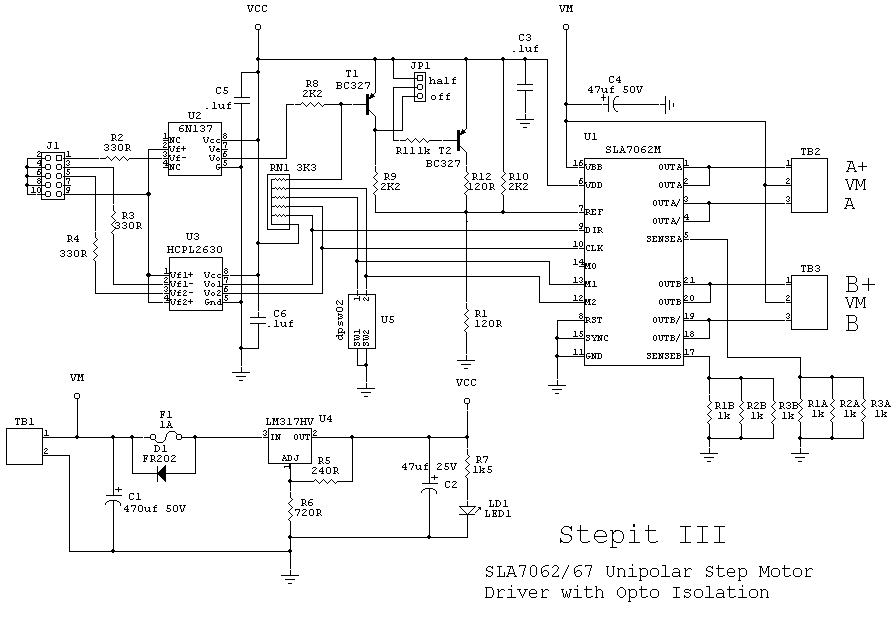
DVI-300/2000 Load Step Response
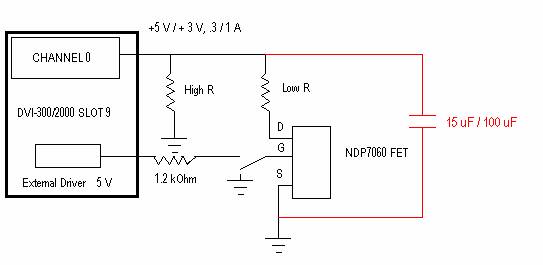
Channel 0 of the Dual Voltage/Current Source (DVI) was utilized as the input. Input levels of +3V and +5V were applied. The load current was the variable of interest related to the performance of the DVI. Two DVIs were tested, one with a maximum output of 300 mA and another with a maximum of 2000 mA. The NDP7060 n-channel FET was employed to switch in the low resistor, thereby introducing high load current. When the gate voltage exceeds the source voltage by a minimum of 2 V, as specified in the data sheet, the FET activates, allowing current to flow from the drain to the source. When the FET is off, current flow is inhibited, and the DVI experiences high resistance, akin to a low current load. An external driver controlled by a relay switch was used to turn the gate on and off. With varying load resistance and current, a voltage glitch of a specific amplitude is anticipated. To mitigate the glitch effect, the circuit was modified to include a bypass capacitor connected in parallel with the load resistors. VisualATE and an ASL1000 were utilized to operate the DVI in slot 9. A simple C+ script was developed to control the channel and external driver for changing load resistance and current. Glitches were analyzed during transitions of load current from low to high and vice versa using an AC-coupled probe on an oscilloscope. Tests were conducted on both DVI boards with and without the bypass capacitor under two load current scenarios. Voltage levels of +3V and +5V were applied to the DVI-300 board to evaluate input power effects. In tests without the capacitor, configurations A and C, along with E and G, were subjected to identical load current parameters across different DVI boards, yielding significantly different results. The DVI-2000 board exhibited glitches with smaller peak-to-peak amplitudes and reduced glitch areas, possibly due to the DVI-2000's faster switching responsiveness compared to the DVI-300, resulting in less time to experience load current changes. This phenomenon was only investigated on the DVI-300, although it is likely applicable to the DVI-2000 as well. Analysis of test pairs A and B, and pairs E and F, indicated that higher input power levels resulted in increased glitch amplitudes and larger glitch areas. The DVI-300 displayed greater amplitude changes due to low gain and high load current variations compared to high gain and low load current scenarios. Test pairs C/D and G/H demonstrated that larger load currents produced higher glitch amplitudes and areas for high gain and low load current. However, low gain tests revealed that while glitch amplitudes were still elevated for higher load currents, glitch areas were reduced. The glitches varied significantly depending on the load current switching type. Overall, glitch amplitudes were considerably larger for low gain and high load current changes. Glitch area data appeared inconsistent, with higher values for one load current change under specific settings and lower for another. The capacitor functioned to some extent in diminishing the impact of load current changes by reducing amplitude and facilitating a quicker return to steady state. Amplitudes decreased with capacitors in all tests, yet glitch areas remained relatively constant, indicating a prolonged time for the system to stabilize, evident from the oscillations observed (refer to the APPENDIX under capacitor tests). Two different capacitor values were tested, with results indicating that the larger capacitor significantly reduced amplitude but slightly increased glitch occurrence.
The Dual Voltage/Current Source (DVI) setup described involves a sophisticated circuit design aimed at examining the dynamic behavior of load currents in relation to voltage inputs. The DVI operates under two specified voltage levels, +3V and +5V, which serve as the power supply for the load testing. The incorporation of the NDP7060 n-channel FET allows for effective switching capabilities, where the FET acts as a controlled resistor that can be turned on or off based on the gate voltage.
The switching mechanism is crucial for testing the load current, as it enables the introduction of varying resistances into the circuit. The FET's performance is dictated by its gate-source voltage, which must exceed 2 V to ensure proper operation. This threshold is critical in determining the FET's conductive state and influences the overall performance of the DVI.
The addition of a bypass capacitor serves to stabilize the voltage across the load resistors, minimizing the impact of voltage glitches that occur during rapid changes in load current. This is particularly important in applications where precise voltage control is necessary. The capacitor's role in reducing amplitude while maintaining a steady state is vital for ensuring reliable operation of the DVI.
The use of test configurations across different DVI boards, specifically comparing the DVI-300 and DVI-2000 models, highlights the importance of switching speed and responsiveness in circuit design. The observed differences in glitch amplitudes and areas suggest that careful consideration must be given to the selection of components and their operational parameters to achieve the desired performance.
The testing methodology employed, including the use of an oscilloscope with an AC-coupled probe, allows for detailed analysis of the circuit's behavior under varying conditions. The results indicate that input power levels and load current configurations significantly influence glitch characteristics, thus providing valuable insights into the design and optimization of voltage/current sources in electronic applications. Overall, the findings underscore the complexity of load dynamics in electronic circuits and the necessity for precise engineering to mitigate adverse effects during operation.Channel 0 of the Dual Voltage/Current Source (DVI) was used as the input. Input levels of +3V and +5V were used. Load current was the variable of interest we wanted to relate to the performance of the DVI. One DVI with a maximum of 300 mA and another with a maximum of 2000 mA were tested. The NDP7060 n-channel FET was used to switch in the low res istor, and thus introduced high load current. When the gate voltage is sufficiently greater than the source voltage (minimum of 2 V as specified on the data sheet), the FET turns on and allows current to flow from the drain to the source. Intuitively, when the FET is off, no current is allowed to flow, and so the DVI only sees the high resistance, equivalent to having low current load.
An external driver operated by a switch relay was used to turn the gate on and off. With load resistance and current changing, a voltage glitch of a given amplitude is expected. To minimize the effect of the glitch, the circuit is rewired to include a bypass capacitor attached in parallel with the load resistors. VisualATE and an ASL1000 were used to operate the DVI on slot 9. A simple C+ script was written to operate the channel and external driver to change the load resistance and current.
Glitches were examined at instances were load current changed from low to high and high to low using an AC coupled probe on an oscilloscope. Tests were performed on both DVI boards with and without the bypass capacitor on two load current combinations.
Voltage levels of +3V and +5V were used on the DVI-300 board to test input power effects. In the no capacitor tests, A and C along with E and G were given the same testing parameters of load current on different DVI boards, but the results turned out significantly different. The DVI-2000 board had glitches of smaller peak-to-peak amplitude and lower glitch area. A possible explanation for this is the DVI-2000 having a faster switching responsiveness than the DVI-300, allowing the former less time to experience the effect of load current changes.
This effect was only examined on the DVI-300. It is likely that the DVI-2000 will have the same effect. Looking at test pairs A and B, and pairs E and F, a higher input power level produced higher glitch amplitudes and larger glitch areas. The DVI-300 seems to have a greater amplitude change due to a lowG high load current change than a highG low load current.
Test pairs C/D and G/H show that the larger load currents produced higher glitch amplitude and areas for highG low. However, lowG tests showed that while glitch amplitudes were still higher for higher load currents, glitch areas were lower.
The glitches were quite different depending on the type of load current switch. Overall, glitch amplitudes were significantly larger for highG low change in load current. The glitch area figures seem to be mixed, higher for one load current change with given current settings and lower for the other. The capacitor served its purpose to a slight degree in reducing the effect due to the change in load current by minimizing the amplitude and bringing the system back to steady state quickly.
The amplitudes dropped with the capacitors in all the tests, but the glitch area remained fairly constant. This implies that it took more time for the system to return to its steady state value, and was evident with the oscillations that occurred (see APPENDIX under capacitor tests).
Two different valued capacitors were used, and results showed that the larger one significantly reduced the amplitude, but seemed to increase the glitch by a tiny amount. 🔗 External reference
The Dual Voltage/Current Source (DVI) setup described involves a sophisticated circuit design aimed at examining the dynamic behavior of load currents in relation to voltage inputs. The DVI operates under two specified voltage levels, +3V and +5V, which serve as the power supply for the load testing. The incorporation of the NDP7060 n-channel FET allows for effective switching capabilities, where the FET acts as a controlled resistor that can be turned on or off based on the gate voltage.
The switching mechanism is crucial for testing the load current, as it enables the introduction of varying resistances into the circuit. The FET's performance is dictated by its gate-source voltage, which must exceed 2 V to ensure proper operation. This threshold is critical in determining the FET's conductive state and influences the overall performance of the DVI.
The addition of a bypass capacitor serves to stabilize the voltage across the load resistors, minimizing the impact of voltage glitches that occur during rapid changes in load current. This is particularly important in applications where precise voltage control is necessary. The capacitor's role in reducing amplitude while maintaining a steady state is vital for ensuring reliable operation of the DVI.
The use of test configurations across different DVI boards, specifically comparing the DVI-300 and DVI-2000 models, highlights the importance of switching speed and responsiveness in circuit design. The observed differences in glitch amplitudes and areas suggest that careful consideration must be given to the selection of components and their operational parameters to achieve the desired performance.
The testing methodology employed, including the use of an oscilloscope with an AC-coupled probe, allows for detailed analysis of the circuit's behavior under varying conditions. The results indicate that input power levels and load current configurations significantly influence glitch characteristics, thus providing valuable insights into the design and optimization of voltage/current sources in electronic applications. Overall, the findings underscore the complexity of load dynamics in electronic circuits and the necessity for precise engineering to mitigate adverse effects during operation.Channel 0 of the Dual Voltage/Current Source (DVI) was used as the input. Input levels of +3V and +5V were used. Load current was the variable of interest we wanted to relate to the performance of the DVI. One DVI with a maximum of 300 mA and another with a maximum of 2000 mA were tested. The NDP7060 n-channel FET was used to switch in the low res istor, and thus introduced high load current. When the gate voltage is sufficiently greater than the source voltage (minimum of 2 V as specified on the data sheet), the FET turns on and allows current to flow from the drain to the source. Intuitively, when the FET is off, no current is allowed to flow, and so the DVI only sees the high resistance, equivalent to having low current load.
An external driver operated by a switch relay was used to turn the gate on and off. With load resistance and current changing, a voltage glitch of a given amplitude is expected. To minimize the effect of the glitch, the circuit is rewired to include a bypass capacitor attached in parallel with the load resistors. VisualATE and an ASL1000 were used to operate the DVI on slot 9. A simple C+ script was written to operate the channel and external driver to change the load resistance and current.
Glitches were examined at instances were load current changed from low to high and high to low using an AC coupled probe on an oscilloscope. Tests were performed on both DVI boards with and without the bypass capacitor on two load current combinations.
Voltage levels of +3V and +5V were used on the DVI-300 board to test input power effects. In the no capacitor tests, A and C along with E and G were given the same testing parameters of load current on different DVI boards, but the results turned out significantly different. The DVI-2000 board had glitches of smaller peak-to-peak amplitude and lower glitch area. A possible explanation for this is the DVI-2000 having a faster switching responsiveness than the DVI-300, allowing the former less time to experience the effect of load current changes.
This effect was only examined on the DVI-300. It is likely that the DVI-2000 will have the same effect. Looking at test pairs A and B, and pairs E and F, a higher input power level produced higher glitch amplitudes and larger glitch areas. The DVI-300 seems to have a greater amplitude change due to a lowG high load current change than a highG low load current.
Test pairs C/D and G/H show that the larger load currents produced higher glitch amplitude and areas for highG low. However, lowG tests showed that while glitch amplitudes were still higher for higher load currents, glitch areas were lower.
The glitches were quite different depending on the type of load current switch. Overall, glitch amplitudes were significantly larger for highG low change in load current. The glitch area figures seem to be mixed, higher for one load current change with given current settings and lower for the other. The capacitor served its purpose to a slight degree in reducing the effect due to the change in load current by minimizing the amplitude and bringing the system back to steady state quickly.
The amplitudes dropped with the capacitors in all the tests, but the glitch area remained fairly constant. This implies that it took more time for the system to return to its steady state value, and was evident with the oscillations that occurred (see APPENDIX under capacitor tests).
Two different valued capacitors were used, and results showed that the larger one significantly reduced the amplitude, but seemed to increase the glitch by a tiny amount. 🔗 External reference
